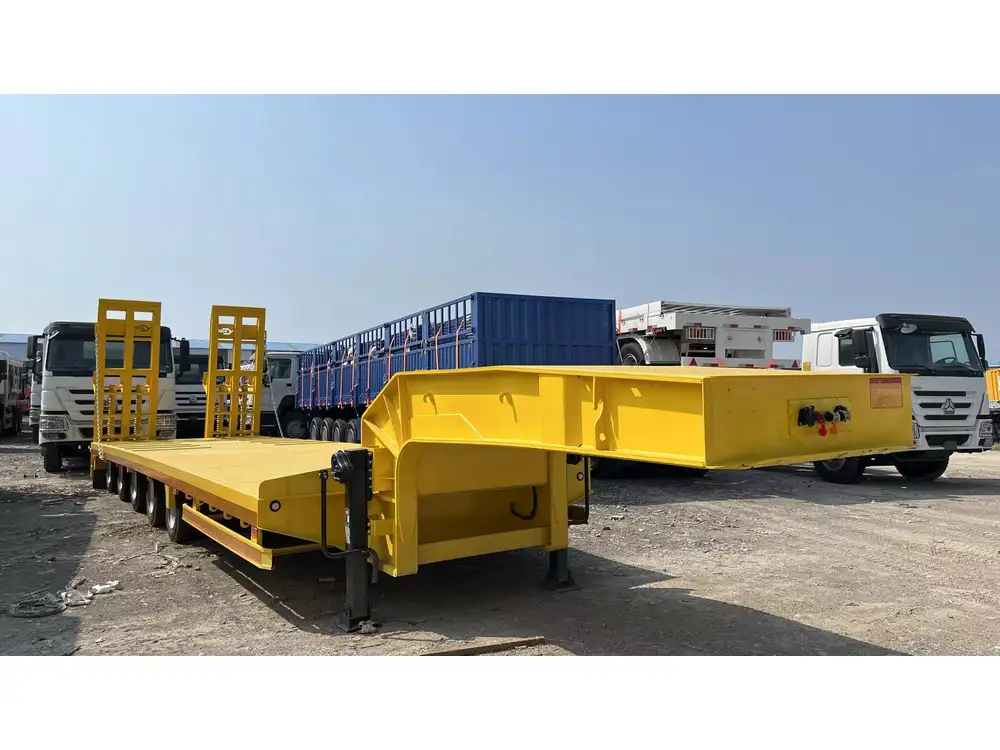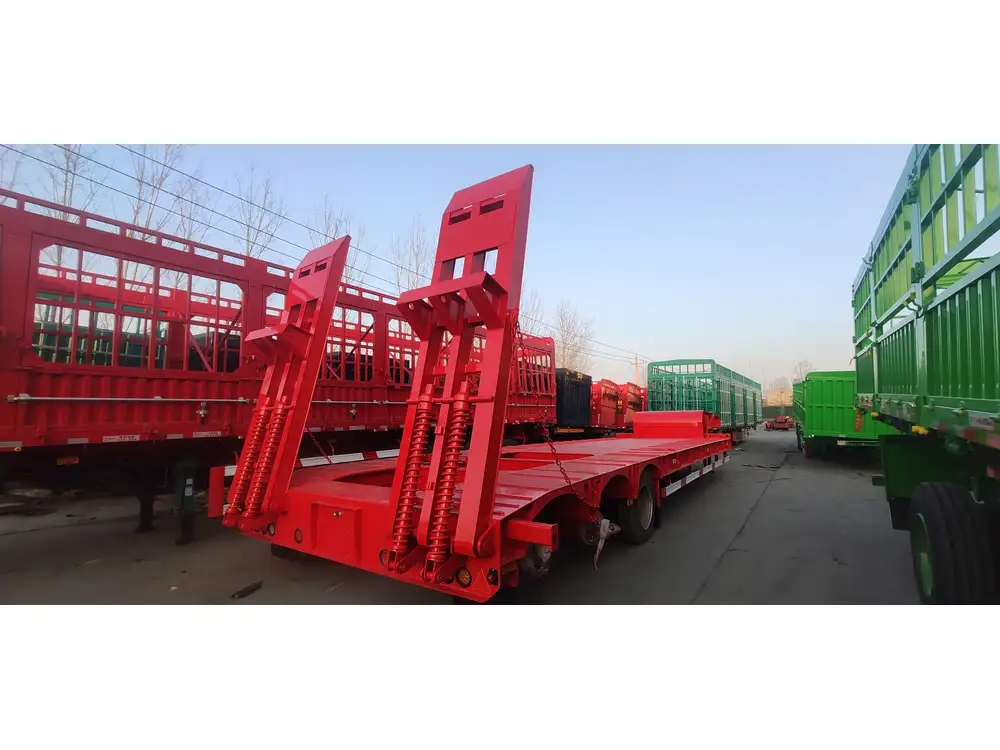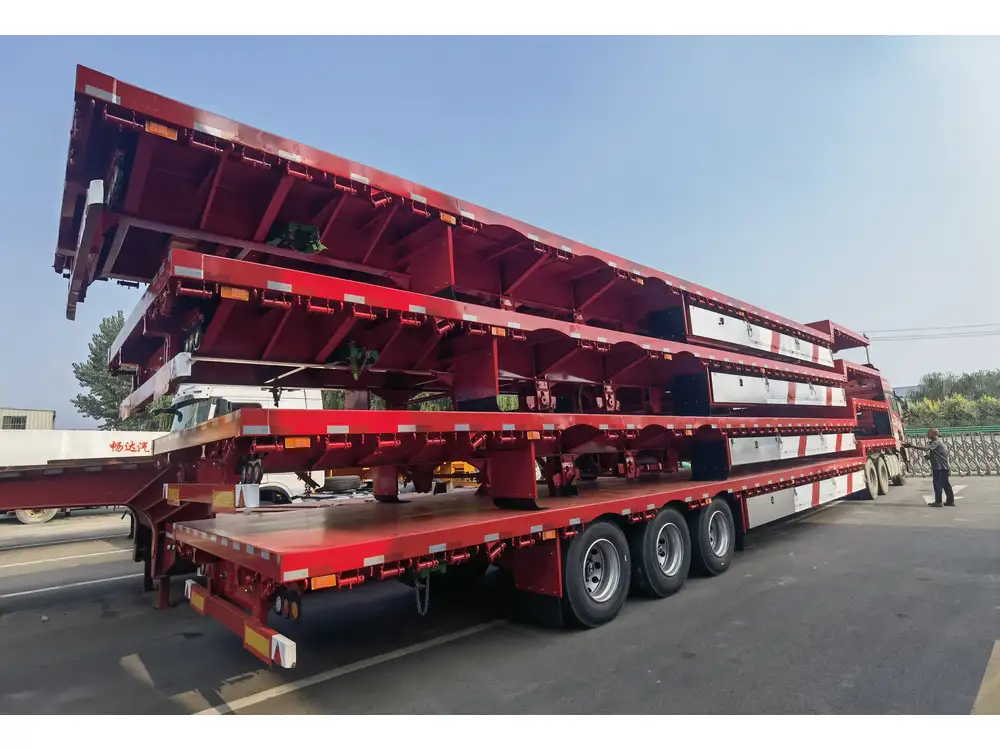In the world of logistics and transportation, semi-truck trailers play a pivotal role in the movement of goods across vast distances. One specific area of importance is the inner dimensions of semi-tractor trailers, which significantly influence load capacity, stability, and overall efficiency during transport. This article delves into the intricacies of semi-trailer dimensions, explores common configurations, and examines how these measurements affect various operational aspects.
Key Terminology and Measurements
Understanding the specifications of semi-trailer dimensions begins with familiarizing oneself with essential terms:
| Term | Definition |
|---|---|
| Length | The total distance from the front to the back of the trailer. This can vary widely by type. |
| Width | The measurement across the sides of the trailer, essential for determining cargo compatibility. |
| Height | The vertical measurement from the trailer floor to the highest point. |
| Load Height | The maximum permissible height of goods stacked within the trailer. |
| Inner Dimensions | The clear measurements inside the trailer, accounting for wall thickness and structural features. |
Common Semi-Trailer Configurations
Different configurations of semi-trailers are available, each with specific dimensions crafted for various transportation needs. Here are the most common types:

1. Flatbed Trailers
Flatbed trailers have no sides or roof, allowing for easy loading and unloading. Their dimensions typically include:
- Length: 48 to 53 feet
- Width: 102 inches (8.5 feet)
- Height: Generally open, varying based on load
2. Dry Van Trailers
These enclosed trailers are designed for transporting goods that are sensitive to environmental factors. Their specifications often include:
- Length: Ranges from 28 to 53 feet
- Width: Commonly 102 inches
- Height: Up to 110 inches from the floor to the ceiling
3. Reefer Trailers
Refrigerated trailers for perishable goods have specific dimensions:
- Length: Usually 48 or 53 feet
- Width: 102 inches
- Height: About 108 inches, accommodating refrigeration units

4. Step Deck Trailers
Step deck, or drop deck trailers, are designed for hauling taller loads. Their dimensions generally are:
- Length: Ranges between 48 and 53 feet
- Width: 102 inches
- Height: Lower deck height varies, typically around 36 to 40 inches
Importance of Inner Dimensions
The inner dimensions of semi-trailer units are crucial for various reasons:
1. Load Capacity and Distribution
Proper understanding of the inner dimensions aids in determining how much cargo a trailer can carry without exceeding weight limits. It ensures even weight distribution, which is vital for road safety and compliance with regulations.

2. Cargo Compatibility
Knowing the inner dimensions permits manufacturers and transporters to select the right trailer for specific cargo types. For example, oversized machinery requires special accommodations that standard trailers might not provide.
3. Efficiency in Loading and Unloading
Sufficient inner height and width assist in optimizing loading procedures, reducing manual handling risks, and enhancing cargo accessibility.
Optimal Dimensions for Cargo Types
Different cargo types have varying optimal semi-trailer dimensions. Here’s a breakdown of common materials and their recommended trailer specifications:
| Cargo Type | Recommended Trailer Type | Ideal Length | Ideal Width | Ideal Height |
|---|---|---|---|---|
| Pallets | Dry Van | 48 – 53 feet | 102 inches | 110 inches |
| Lumber | Flatbed | 48 – 53 feet | 102 inches | Open |
| Ton Container | Step Deck | 48 feet | 102 inches | 40 inches (max) |
| Refrigerated Goods | Reefer | 48 – 53 feet | 102 inches | 108 inches |
| Heavy Machinery | Flatbed or Step Deck | 48 – 53 feet | 102 inches | Variable |

Regulations Impacting Trailer Dimensions
Various regulations govern trailer dimensions, predominantly focusing on maintaining road safety and structural integrity. These include federal guidelines, state regulations, and international standards. Some key aspects are:
1. Federal Bridge Formula (FBF)
The FBF determines the maximum allowable weight that a vehicle can carry based on its axle configuration and spacing, which in turn impacts the design and dimensioning of trailers.
2. Height Restrictions
Federal regulations mandate a maximum height of 13.5 feet for highway travel, whereas state laws can impose lower limits affecting trailer design choices.

3. Width Limitations
The standard maximum trailer width is 102 inches. However, some states allow larger widths for specialized vehicles, subject to specific permits.
Innovative Trailer Design and Technology
The evolution of trailer technology has brought innovative design features aimed at optimizing inner dimensions and enhancing functionality:
1. Adjustable Height Features
Many modern trailers incorporate adjustable height floors and hydraulic systems, allowing flexibility in handling various load types and enhancing accessibility.

2. Modular Designs
Modular trailers, which can be disassembled and reconfigured, provide versatility in inner dimensions and effectively meet diverse cargo requirements.
3. Advanced Materials
Utilizing lighter yet durable materials facilitates an increase in payload capacity without compromising structural integrity.
Challenges with Inner Dimensions of Semi-Trailers
While understanding and optimizing inner dimensions is critical, several challenges can arise:

1. Space Constraints
Available loading docks and transport routes can impose limitations on the maximum dimensions of trailers and the types of cargo they can carry effectively.
2. Compliance with Regulations
Navigating the complex web of federal and state regulations regarding trailer dimensions can be daunting but is essential for maintaining legal compliance.
3. Damage Risks
Overloading a trailer beyond its inner dimension capacities can compromise not just the trailer’s structural integrity but also overall safety, putting both the driver and other road users at risk.

Conclusion
The inner dimensions of semi-truck trailers are a fundamental aspect of successful logistics and transportation operations. Understanding these dimensions enables manufacturers, transport managers, and drivers to make informed decisions about trailer selection, load compatibility, and regulatory compliance.
As the market for shipping and logistics evolves, manufacturers must continue to innovate and adapt their designs to meet the growing demands for efficiency, safety, and sustainability. By keeping abreast of advancements in technology and changes in regulations, stakeholders in the transportation sector can ensure they are well-equipped to navigate the challenges associated with semi-trailer dimensions, positioning themselves at the forefront of the industry.
This comprehensive exploration into semi-trailer inner dimensions underscores their significance, not just for compliance, but as a critical component of supply chain efficiency. Tailoring the trailer type and dimensions to specific cargo and transportation needs will ultimately result in increased operational efficacy.
Understanding these factors is not just beneficial; it’s paramount in ensuring a competitive edge in the logistics sector. Whether you are a manufacturer, logistics coordinator, or transporter, integrating this knowledge into your operational strategy is essential for optimizing performance in a demanding and dynamic industry.



